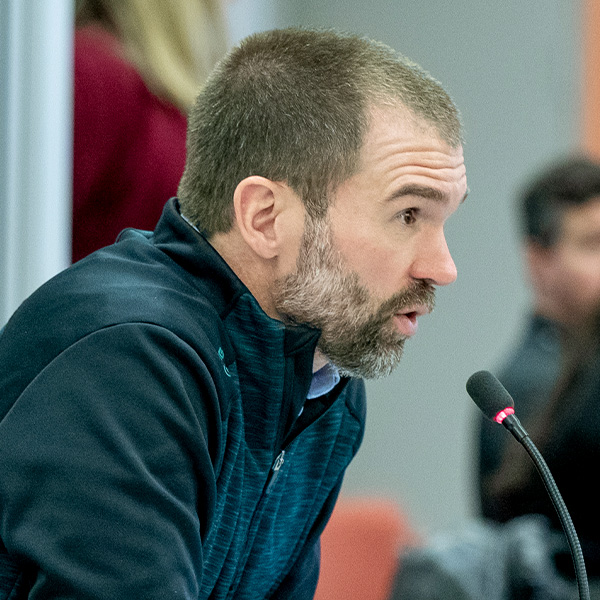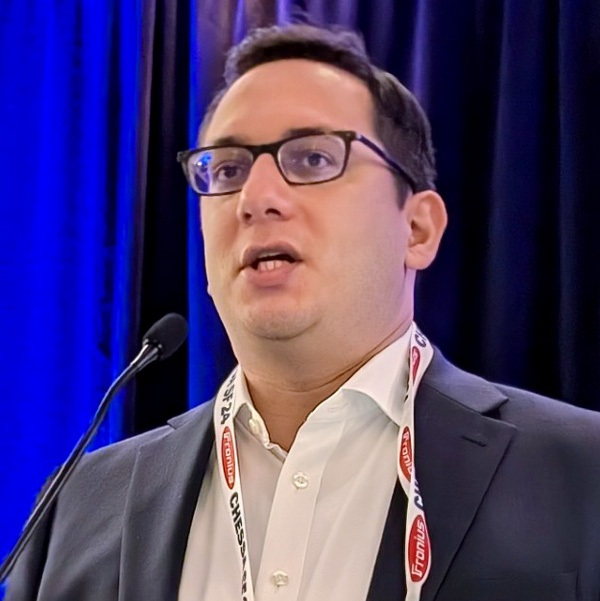Members Endorse 2 Changes to Transmission Planning
ERCOT stakeholders approved a pair of protocol changes related to transmission planning as the Texas grid operator continues to grapple with connecting incoming load to its system.
During the Technical Advisory Committee’s Nov. 20 meeting, members approved NPRR1247, which uses a consumer energy cost reduction test to measure congestion cost savings when evaluating economic transmission projects. They also approved NPRR1180 and a related change to the Planning Guide (PGRR107) that incorporates a 2022 state law requiring any ERCOT reliability transmission project review to include the historical load, forecasted load growth and additional load seeking interconnection.
Several generators and retailers opposed the first protocol change, noting that congestion costs can be hedged but transmission costs can’t.
“We think basing decisions on that is probably discounting a significant value that accrues to loads,” Luminant’s Ned Bonskowski said.
The NPRR was brought forward by ERCOT staff after collaborating with the Public Utility Commission. The ISO retained Energy and Environmental Economics (E3) to identify a set of viable options and provide recommendations for the most suitable congestion cost savings test. E3 presented its work in a March 2024 analysis, recommending a system-wide energy cost reduction test as the most suitable for ERCOT.
While staff approved E3’s recommendations, Luminant said the proposed congestion cost savings test could increase costs for ratepayers when competitive market solutions could serve load less expensively. The generator suggested applying a .25 multiplier factor to the calculated system-wide consumer energy cost reduction before using it to determine a project’s economic benefits.
“We think this may be a good compromise,” Bonskowski said. “If there’s a need to move forward on something today, we certainly would also support tabling” to give stakeholders more time to “make sure that we get this right before sending it up to the board.”
The vote to table NPRR1247 fell short, 11-17, with one abstention.
Mark Bruce, speaking for Pattern Energy, said his client is concerned about an overall lack of transparency and the need for further vetting. He said Luminant lacked backing data in its comments and urged stakeholders to revisit the matter with a change to the Planning Guide to further prevent downstream effects.
“I know there’s been some pressure from above to deliver something to the board on this at their next meeting,” Bruce said. “My client’s been engaged from the get-go, from its first showing as a draft before it was even filed. We’ve been trying to understand and perfect this very important revision request.”
TAC eventually approved the measure 25-3, with one abstention. Luminant, Calpine and Shell North America all opposed the motion.
The committee approved NPRR1180 25-0, with four abstentions, two from consumer interests.
The Office of Public Utility Counsel’s Nabaraj Pokharel said he supported the rule’s legislative intent but stressed the importance of ensuring load projections used for planning “are as accurate as possible.”
“There is a risk of unintended consequences, particularly if load studies are not thorough or accurate,” he said. “While building transmission to meet actual load is necessary, [it] could result in unnecessary cost that would ultimately be borne by residential consumers.”
To remedy that concern, Mark Dreyfus, speaking for a coalition of cities, suggested approving the protocol change and filing a follow-up revision request that drills down into the load-projection’s validation process.
“There’s a lot of projects waiting to have this process in place and we need to get moving on those projects,” he said.
Texas Competitive Power Advocates Executive Director Michele Richmond said several meetings with Oncor and other wires companies have resulted in a draft proposal for another NPRR that would address the process’ transparency and standardization.
“I think we are very comfortable with moving this forward, given that commitment and the really good discussions that we have been having,” Richmond said.
Large Loads Need a Segment Home
TAC discussed with staff potential changes to the committee’s segment makeup, driven by the growing influence of data centers and cryptocurrency miners that don’t fit neatly into either the industrial consumer or large commercial segments.
ERCOT membership has risen from 257 members in 2021 to 356 this year, mostly because of large flexible loads. Staff has asked entities with large loads to register in the industrial segment when making their membership applications for 2025.
The grid operator’s seven segments are used to fill out the 30-person TAC. Any changes to the representation would require an amendment to the bylaws and PUC approval.
“Things have changed a lot,” Engie’s Bob Helton said, alluding to a TAC segmentation that has been static since 2014. “Every time we talk about this, we have to be careful of balance. Anything we do is going to be a long, drawn-out deal to make sure that that balance remains in place and that no segment or group has a heavier weight than any other one in trying to approve things.”
Staff said ERCOT now has just over 62 GW of large loads in its interconnection queue. It has added another gig of new standalone and co-located projects since October.
West Texas Project Endorsed
TAC members endorsed ERCOT’s recommended $202.2 million Oncor project that addresses reliability issues in West Texas, placing it on the combination ballot.
The project stems from the 2019 Delaware Basin Load Integration Study. The region has significant oil and natural gas load and ERCOT’s highest peak demand growth rate percentage in recent years.
The Regional Planning Group approved Oncor plans to upgrade an existing capacitor station, build 22 miles of double-circuit 345-kV lines, convert 41 miles of 138-kV lines to 345-kV, build 41 miles of new 138-kV lines, and install six 5000-A, 345-kV circuit breakers. The project is expected to be completed in 2027.
Because the project cost more than $100 million, making it a Tier 1 project, it must be approved by ERCOT’s Board of Directors.
Co-chair Martin to Step Away
The meeting was the last as TAC’s co-chair for Collin Martin, Oncor vice president of grid operations. Martin told his fellow members he is stepping away “partially” to focus on potential transmission projects in the Permian Basin.
“I appreciate everybody’s confidence in being able to be seated to this on the table,” he said. “It’s been a great year. I learned a lot.”
“I learned a lot from Collin,” said TAC Chair Caitlin Smith, with Jupiter Power. “He brought a wide range of knowledge to TAC leadership, and not just the engineering side. He knows a lot about the market side and the systems and everything. I think having him here to add his perspective has been very valuable.”
Fellow Oncor employee Martha Henson has been proposed as Martin’s replacement. Smith will continue as chair.
HDL Override Change Tabled
TAC again tabled a protocol change (NPRR1190) that would recover demonstrable financial loss arising from a manual high dispatch limit (HDL) override to reduce real power output, should the output be used to meet qualified scheduling entity load obligations. Members directed their Wholesale Market Subcommittee to provide remarks on the change back to the Protocol Revision Subcommittee before they take it up again in January.
The change was approved by TAC in June. However, the board remanded it back to TAC in October over the consumer segment’s concerns that the NPRR would reward overscheduling of power that cannot be delivered. Members of that segment say that will force consumers to subsidize insufficient hedging by other market participants in the face of changing grid conditions. (See “2025 AS Methodology OK’d,” ERCOT Board of Directors Briefs: Oct. 9-10, 2024.)
Reliant Energy Retail Services’ Bill Barnes said he has discussed this with Eric Goff, who represents residential consumers but was unable to attend the meeting, and floated a concept from their conversation. He said it acknowledges consumer concerns about a situation where HDL overrides become a “dominant component” of the market.
“We would be more dependent on these out-of-market payments. That’s not the goal of 1190. That’s not the goal for any of us,” he said.
Barnes said an annual settlement trigger, should ERCOT find itself in a situation where it hits a threshold amount of HDL payments, would lead to a review of the protocol’s language. That would tighten the contracts eligible for some participants, he said.
Members unanimously endorsed a combo ballot that included four NPRRs and related changes to the Planning Guide (PGRR) and Nodal Operating Guide (NOGRR) and an Other Binding Document request that will do the following if approved by ERCOT’s board:
-
- NPRR1239, NOGRR266: move reports that don’t contain ERCOT critical energy infrastructure information (ECEII) from the market information system secure area to the public ERCOT website.
- NPRR1240, NOGRR267, PGRR116: move reports that don’t contain ERCOT ECEII information from the market information system secure area to the public ERCOT website. The change also conforms rules with current posting practices, including those for maintaining ECEII lists of equipment in the outage scheduler; for making the annual planning model data submittal schedule available in the model-on-demand (MOD) application; and for posting weekly demand forecasts, demand analyses for 36 months and beyond, metrics of forecast error, and assessments of chronic congestion on the website.
- NPRR1246, NOGRR268, OBDRR052, PGRR118: insert terminology associated with energy storage resources (ESRs) into the protocols, aligning the ESRs’ provisions and requirements with those for generation resources and controllable load resources. The change applies to ESRs in the future single-model era and should be implemented simultaneously with NPRR1014 (BESTF-4 Energy Storage Resource Single Model).
- NPRR1254: require resource entities to submit the initial resource registration data for a generator interconnection or modification (GIM) project four months prior to target inclusion in the ERCOT network operations model. This gives ERCOT and the entities one month to address errors or deficiencies.


